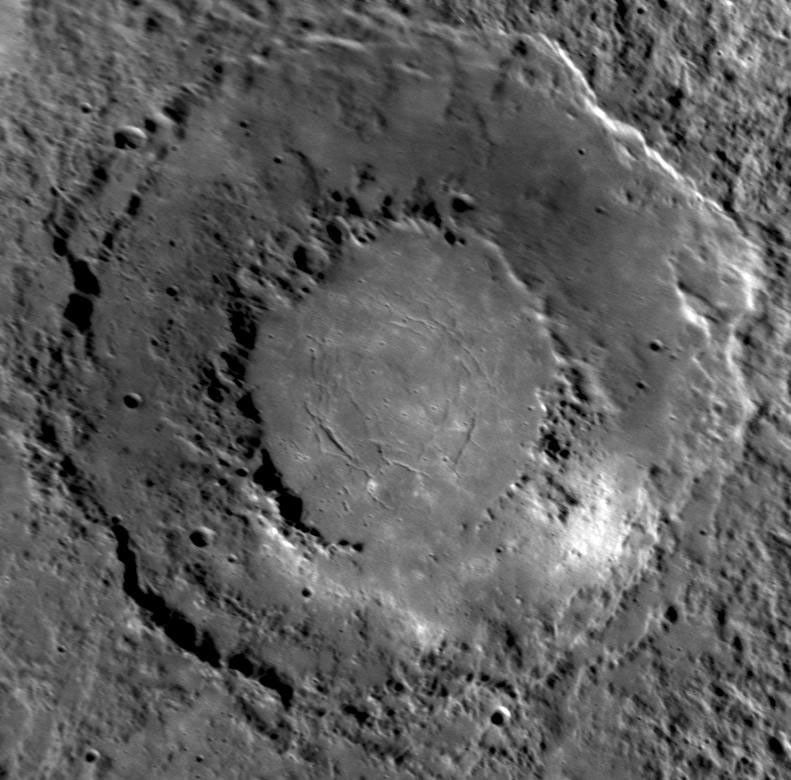Description
This spectacular 290-kilometer-diameter double-ring basin seen in detail for the first time during MESSENGER's third flyby of Mercury bears a striking resemblance to Raditladi basin, observed during the first flyby. This still-unnamed basin is remarkably well preserved and appears to have formed relatively recently, compared with most basins on Mercury. The low numbers of superposed impact craters and marked differences in color across the basin (seen in this enhanced color image released earlier this week) suggest that the smooth area within the innermost ring may be the site of some of the most recent volcanism on Mercury.
Date Acquired: September 29, 2009
Instrument: Narrow Angle Camera (NAC) of the Mercury Dual Imaging System (MDIS)
Scale: This double-ring basin is 290 kilometers (180 miles) in diameter
These images are from MESSENGER, a NASA Discovery mission to conduct the first orbital study of the innermost planet, Mercury. For information regarding the use of images, see the MESSENGER image use policy.

































